The road to recovery
The road to recovery is measured in degrees and millimetres, each one painfully gained as shattered...
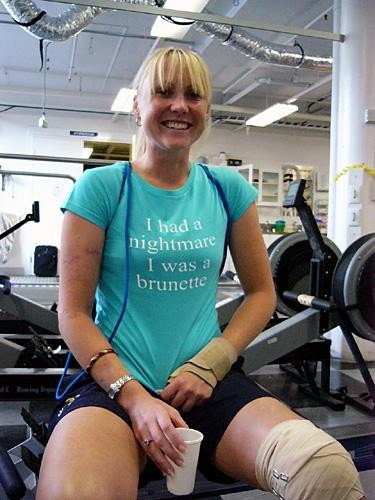
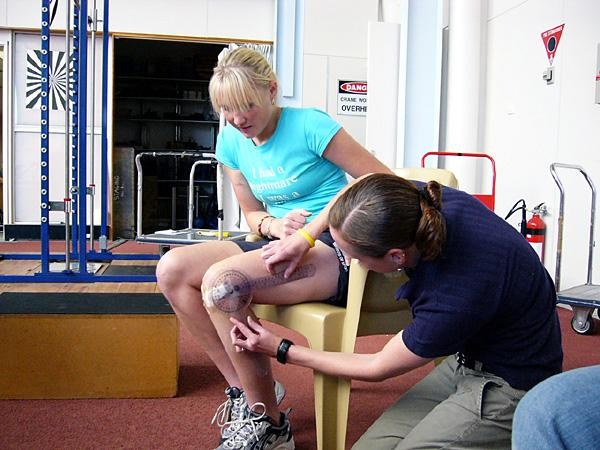
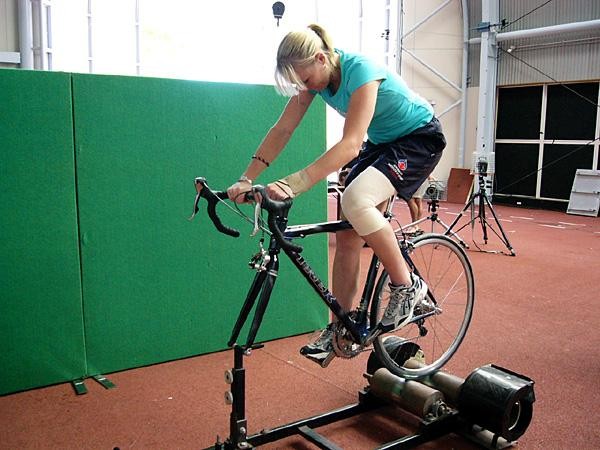
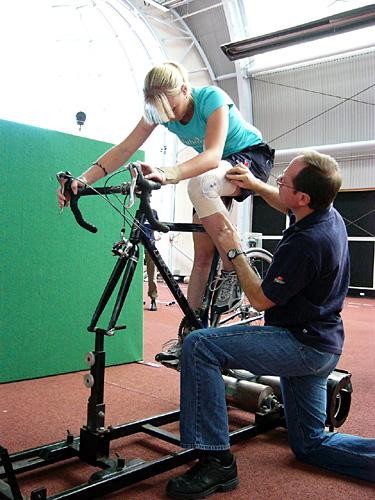
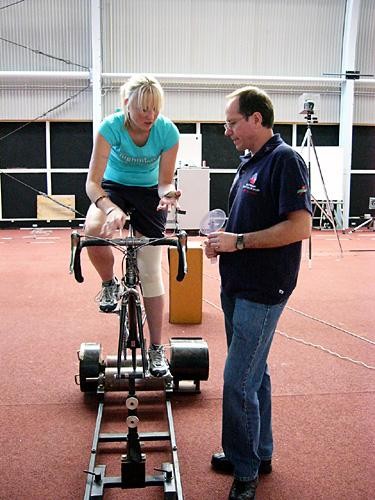
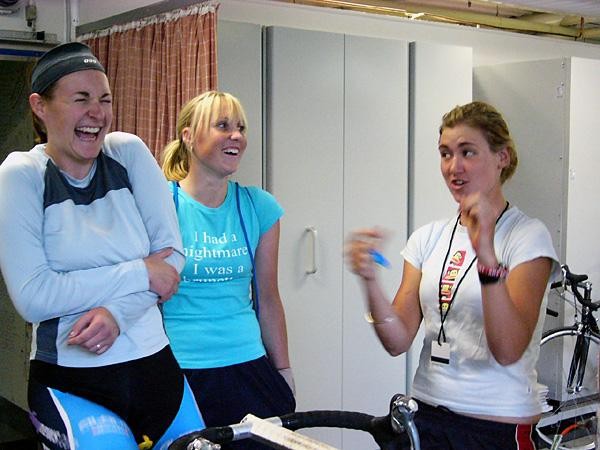
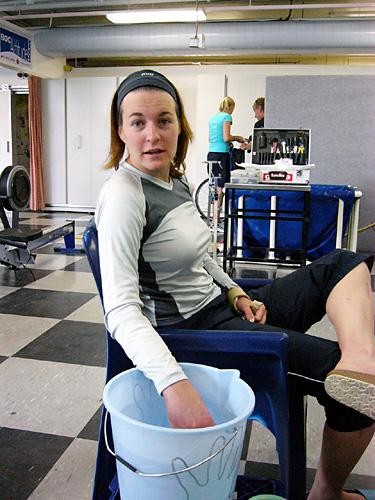
AIS training camp, Part III: An interview with the survivors of the German tragedy, December 25, 2005
The road to recovery is measured in degrees and millimetres, each one painfully gained as shattered limbs gradually regain movement. Gerard Knapp reports from the Australian Institute of Sport (AIS) in Canberra, where the five riders who survived the shocking tragedy in Germany this July were back in the lab, showing an amazing rate of improvement and still very much an important part of the women's road racing program.
Katie Brown moved her left leg - initially thought to be so badly damaged, it would need to be amputated - on to the pedal of her new bike, and the rider gingerly, painfully, began another important cycle of rehabilitation.
It was less than five months earlier that Brown had ended up in a ditch on the side of a relatively quiet German road, after being slammed within an inch of her life by an out of control car. That same leg, as she put it, had been shattered to the point where "my ankle ended up around my armpit."
But a few days prior to her session in the AIS biomechanics lab in Canberra, surgeons in Sydney performed yet another operation. This time, it was removal of a section of synthetic cord, wrapped in a figure-eight pattern around her kneecap that had held her leg together. Its removal led to another a breakthrough for the rider; she went into triple figures - 101 degrees, to be exact - of knee bend.
Earlier, her knee flex hovered in the low 90s, but all the determination was there in the AIS biomechanics lab to go further, whatever the pain. The effort belied her appearance. Katie Brown is a blonde, bubbly extrovert. Her t-shirt she wore on the day in the lab read: "I had a nightmare I was a brunette."
But when Brown removed the bandage and worked with a physiotherapist, who measured her progress, the rider screwed her face in pain each time she went one better than the previous effort. It seems the normal competition among the athletes - as in who is the strongest rider - had converted to measuring their recoveries.
Get The Leadout Newsletter
The latest race content, interviews, features, reviews and expert buying guides, direct to your inbox!
Further motivation - if any more was needed - was a gleaming new bicycle (apparently arranged by her father) that biomechanics specialist Brian McLean was quietly setting up on a stand. McLean had a record of Brown's riding position from her previous sessions in the lab, but he knew that it would need to be modified.
But for an elite rider to adopt an 'easier' position, or sit more upright, or ride shorter cranks, it can be seen as being a bit soft. Despite what Brown had been through, she was not keen on the idea of using shorter crank-arms.
"That's cheating, isn't it?" Brown enquired to the specialist, who was calmly suggesting that shortening a crank by several millimetres would not be a permanent solution. (The idea that any cyclist, anywhere in the world, would question her determination seems ludicrous.)
When it was suggested that track riders typically used shorter cranks on their fixed gear machines, than those of their road bikes, she added, "I was never really a trackie. Unfortunately, that type of blood doesn't seem to run through me." An interesting genetic trait, considering she is the sister of Graeme Brown, a dual Athens 2004 gold medalist on the track, and an accomplished road sprinter who's joining Rabobank in 2006.
Katie Brown normally rides 172.5 - McLean was suggesting a special set at 167.5mm be fitted. McLean persisted and finally Brown agreed, the deal-breaker being that he convinced her it would speed her already staggering rate of recovery.
It was all about getting her back on a bike, which is where all five survivors of the tragedy in Germany, really want to be. As another of the riders said, after she had got back out on the road a few weeks earlier; "I just want to be back on my bike, and then racing. But I still just enjoy riding my bike, even if it is just to the coffee shop."
No escape from testing times
Their coach, Warren McDonald, had assembled some 25 of Australia's leading and emerging female road cyclists together in Canberra for a week of testing and analysis. It was also a chance for many of the younger riders identified by state coaches to meet the senior riders, and for all to go through a series of tests.
The five survivors were not left out. Indeed, they took their place - where their bodies permitted - for a variety of tests. McDonald saw it as a major step in their recovery, and for the five survivors, it was a bitter-sweet time. One year earlier, they'd been the pick of the new generation, in full health, beaming with pride, ready to hit Europe and carry on the tradition of the AIS women's road teams. Now, they were back in a familiar environment - this time surrounded by talented newcomers - and without their strength, speed and stamina that had secured their places. Above all, they also knew there was one less rider, too.
"It's quite hard to come back here because we were all together here before," said Brown, "But to be back doing tests in the lab...it's a good thing, and I plan to have a good day."
At the beginning of the year, they had filled the shoes of a 2004 team that was stacked with talent. Australian women brought home an Olympic gold medal and yet another overall World Cup victory, won by a supposedly 'development' squad that schooled the top professionals in the art of selfless teamwork.
Following their astounding success, most of the AIS' 2004 women secured professional contracts, so for 2005, McDonald went into development mode with an eye towards the Commonwealth Games in 2006, and the Beijing Olympics two years later.
He'd taken the pick of the new generation for 2005 and set about grooming them for greatness. His plans were shattered on July 18, but if anything was clear from this training camp, the kind, bear-like man who's a father figure to his riders, is not done with them yet. He's far from it.
Dealing with it
Each of the riders, it seems, has developed their own way of dealing with the pain; primarily the loss of their friend and team-mate, Amy Gillett, and then their injuries.
The loss of Gillett took away the team's elder and natural leader. At 29, Gillett was already an accomplished athlete who'd represented her country in rowing before taking up cycling. A tall, attractive blonde who was married to a successful man, Simon, who, in the words of one of her closest friends, ensured that she was "she was probably the only cyclist getting around in Europe with designer underwear and $30,000 in rocks." (See report from funeral service).
They were all in a German hospital when their team-mate was buried at home, so they had their own service in their communal room, surrounded by family and friends. As expected, they've supported each other and have grown even closer (Brown is to be a bridesmaid at Louise Yaxley's wedding next year).
Back at home, they each have their own way of dealing with the tragedy. During the week of the training camp, the waif-like Lorian Graham, the 2005 Australian road champion, was on the road, supporting her boyfriend Peter Forbes and his mates on their interstate charity ride to raise funds for the Amy Gillett Foundation, and raise awareness among other road users of cyclists' rights, and lives.
Cyclingnews spoke with Graham prior to her visiting the lab, and the news of Brown's success in bending her knee past 100 degrees fired up the tiny roadie. Graham's leg - among other injuries - was also badly broken in the accident, and movement in her knee is tightly restricted. Brian McLean's solution was to source a pair of special cranks that would allow her to use a crank-length as short as 125mm and then as her knee improves, the pedals can be moved further out.
Graham laughed about the prospect of pedaling the hamster gears, and using cranks that are normally found on kids' bikes. It didn't matter, as long as she could start riding again, and she was motivated to keep up with Brown's knee flex.
Starting over
The extent of the damage to the compact car that struck the six young women - whose average weight would be about 60kg - is to realise just how bad it must have been. The car looked like it had been hit by a bus. "I can't put into words how hard it must have been for him," said one of the riders of her coach, who arrived only moments afterwards to be struck by the unimaginable tragedy.
The day after at the Tour de France, Lance Armstrong called back an Australian television reporter, Mike Tomalaris, after the usual sound-grabs had been given, and said he wanted to make a special comment. "Every time you suit up," said the then six-time Tour winner, "you realize it could happen."
Armstrong knew it was every cyclist's worst nightmare realized - a vehicle slamming into you and your best mates while out on a training ride.
To review the medical summaries, the accident photos, the efforts of the emergency crews to revive the girls and then keep them alive, fight to keep their limbs attached, are all reason to celebrate the prospect of two survivors - Katie Nichols and Alexis Rhodes - lining up to race in Melbourne next month at the Jayco Bay Classic street criteriums in Melbourne.
Rhodes suffered some 31 fractures between her neck and waist. Her condition was critical. Doctors kept her unconscious and on an automatic ventilator for days. Finally, with her parents present, the German specialists reduced her sedation and allowed her to wake, almost one week after the accident. Doctors wanted to keep a breathing tube going into her lungs to minimize risk. But it didn't stay there. The official reason, according to the AIS' Dr Peter Fricker, was "Alexis requested they take it out and after checking her lung function they agreed to her request."
It's understood that this 'request' from the media-shy, laconic girl of the Northern Territory was to say when the tube was removed, "for f***'s sake, all I want is a glass of water."
Rhodes has stayed very deliberately away from any media throughout her ordeal. Everyone around her accepts that "it's just her way of dealing with it". Fair enough, too. It's patently clear she just wants to get back into racing.
As a second-year senior, Rhodes blew away the field in a round of the UCI's track world cup. Before the start, her then coach, Gary Sutton, suggested she shouldn't be intimidated by the older riders. Rhodes left them behind with her unchecked ambition and talent, lapping the field twice. As she rode past Sutton afterwards, she cheekily asked, "Was that aggressive enough for you?" French legend Marion Clignet, who'd just witnessed this teenager's stomping of the field, thought it unfair that Australia kept developing riders of her potential, and courage.
Katie Nichols has almost recovered from the severe tendon and tissue damage, even though glass fragments stay behind as a reminder. She is quiet, shy, and the daughter of Kevin Nichols, a gold medalist in the teams pursuit at the 1984 Los Angeles Olympics. Cycling - no, make that racing - is in her genes. At the launch last week for the Jayco Bay Classic, she said, "There is no doubt a terrible incident, like what happened in Germany, makes you re-evaluate what is important to you.
"But after a while, I realised I just wanted to race again and I can hardly wait."
The smiling ambassador
Along with Alexis Rhodes, the other rider to be on the critical list and kept on an automatic ventilator for a week was Tasmania's Louise Yaxley. But at the AIS lab in December, she was there, smiling, despite the affects of her injuries that will result in more skin grafts, spinning away on a stationary trainer, with the handlebars set much higher than normal to relieve the downward pressure on the recovering limbs.
Yaxley has been generous in her time to the point where she will be the official 'ambassador' of her home State's famous Christmas Carnivals, a series of track races in Tasmania held at this time each year for over a century that regularly attract world and Olympic champions.
Last year, Yaxley was one of the strongest women on the track, as the qualified schoolteacher was now concentrating on her racing, in particular the road time trial.
Like Brown, Yaxley's injuries were so bad at the time that medical staff on the scene first thought an amputation may be necessary, due to the amount of skin and tissue lost, or at the least her wrist 'fused' due to the extent of the damage. Unlike Brown, however, Yaxley had lost consciousness at the scene and in her helicopter, again, one of the German specialists stepped in and saved her limb - and probably her racing career.
For these young riders who've developed in the age of indexing and bar-mounted gear-changing, Yaxley was at first somewhat concerned that her injuries may mean she'll have to use downtube levers to change gears. Yaxley laughed about it, as it had been pointed out that no less than Lance Armstrong used a similar combination for tough mountain stages of the Tour de France, mainly to reduce the weight of his bicycle.
Forcing change
"I think that all the energy that had gone into our training, went into the healing," said Katie Brown. "We're all hard bitches," she added with a cheeky smile.
While racing is still some time in the future for Brown, she said, "I can't do anything but try, and try hard. It all depends on how my knees hold up, but I'm not going to give it up without having a really good go.
"The recovery has been a lot shorter than expected. In the hospital, back home, we've surprised everyone, and I think the reason we were in the team in the first place is probably why we've recovered more quickly than they expected. But mind you, we're determined girls."
Despite their amazing recoveries, and even the German government expediting the compensation claims for the injured riders, the painful memory of that tragic day in July remains. "No amount of money is going to bring back Amy," Brown said, "and I would much rather not have the money, and have my normal life back."
(Last month, news broke that two of the riders had been granted significant payouts from a German administration that one expects is horrified such a tragedy occurred on its roads.)
Each of the girls was overwhelmed by the response in the home country - and in the cycling world - to their accident. When Amy Gillett's coffin was flown home, it was taken from the Qantas Jumbo draped in an Australian flag, a ceremony befitting that of a returned servicewoman who died representing her country.
The respect shown towards the AIS women was in stark contrast to the media's feeding frenzy only one year earlier following the Mark French doping case, where a teenage rider attempted to smear the sport with allegations that later proved to be unsubstantiated.
But the reality for those who've been able to resume riding on the road showed that life really hadn't changed that much. "It was awesome, all the support we received," said one of the girls, "But some people still drive like idiots. Maybe they could just slow down when they come around us."
The overwhelming need for other road users to respect cyclists has become one of the key objectives for the Amy Gillett Foundation, and next month some 2000 cyclists are expected to congregate in Geelong, Victoria, for a charity ride with most of Australia's leading cyclists, to celebrate her life, and make a statement to road users.
Two of the riders in that large group will be survivors of the accident in Germany, and their team-mates are expected to join them. One summed up the aspirations of all the girls: "I love racing as much as riding, if not more. I just want to be back on my bike, and racing."
(Also in January is a very special ride for everyone in Australian cycling - the Amy Gillett-Safe Foundation ride on January 7: www.amysride.com.au)
Also see:
AIS training camp, Part I: An interview with Warren McDonald, December 23, 2005
AIS training camp, Part II: An interview with Amanda Spratt, December 24, 2005
Index to all AIS women's training camp features
Related stories
April 3, 2006: Mark Webber cautions motorists to watch for cyclists in Amy Gillett's name
February 21, 2006: AIS survivors tell of crash and recovery
February 7, 2006: AIS crash verdict: "German law was applied"
February 4, 2006: AIS crash: driver sentenced
December 25, 2005: An interview with the survivors of the German tragedy
December 23, 2005: An interview with Warren McDonald
December 13, 2005: Emotional conclusion to Amy Gillett Charity Ride
Amy Gillett Foundation Charity Ride diary
October 28, 2005: AIS women at charity luncheon in Sydney
October 20, 2005: Yaxley making solid progress
October 6, 2005: Investigation in Gillett's death almost complete
August 24, 2005: Graham vows to return
August 22, 2005: Yaxley and Rhodes home
August 18, 2005: Rhodes and Yaxley bound for home
August 14, 2005: Yaxley and Rhodes continue to make progress
August 11, 2005: Brown vows to return to cycling
August 8, 2005: More support for Gillett-Safe Cycling Foundation
August 3, 2005: Rhodes and Yaxley out of intensive care
July 29, 2005: Amy Gillett's life recalled in moving service
July 28, 2005: Rhodes and Yaxley recovery 'amazing'
July 24, 2005: Yaxley improving, Rhodes still unconscious
July 21, 2005: AIS head 'optimistic' about recovery; 'Brownie' tries his best
July 19, 2005: Unprecedented carnage in GermanyJuly 18, 2005: Amy Gillett dead after crash in Germany